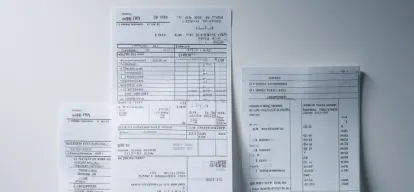
4 min read
PayrollWhat Happens When Payroll Is Late? (And How to Prevent It)
Late payroll hurts trust, breaks compliance, and creates chaos. Learn what really happens when payroll is delayed—and how Cadence helps you prevent it.
Founder

If you’re still managing payroll with spreadsheets, handwritten notes, or manually entering everything into a basic accounting tool—you’re not alone.
A lot of business owners start this way. It’s affordable, familiar, and seemingly straightforward.
But here’s the truth: manual payroll isn’t really “cheap” or “simple.”
In fact, it may be silently costing your business time, money, and peace of mind.
At Cadence HCM, we’ve helped many business owners make the switch from manual to modern—and most of them say the same thing after:
“I wish I’d done this sooner.”
Let’s walk through what manual payroll is really costing you—and how to know when it’s time to upgrade.
Running payroll by hand often seems like “just a few hours,” but those hours add up.
Consider:
Even if you spend 3 hours per pay run—that’s 72 hours a year just on payroll. That’s nearly two full workweeks.
If someone else on your team is handling payroll manually, their time (and salary) is being used inefficiently too. Every minute spent tracking down numbers or correcting mistakes is time not spent on growth, strategy, or customer service.
Manual systems rely heavily on human accuracy. And even the most detail-oriented people make mistakes. One extra zero, a miskeyed rate, or a missed deduction can lead to:
The IRS assessed over $6 billion in payroll penalties in a single year—most of them tied to late or inaccurate filings by small businesses.
Manual methods rarely offer real-time validation or alerts. That means you might not even know something’s off until a tax notice shows up—or worse, an employee flags it after payday.
Payroll is governed by a mix of federal, state, and local laws—and they change constantly. Minimum wage updates, new tax rates, family leave rules, and more can affect how you process payroll.
Unless you’re monitoring updates regularly (or have someone doing it for you), manual payroll leaves you vulnerable to:
Multi-state payroll brings a whole new layer of rules—different tax rates, deadlines, and forms. Manual systems simply don’t scale easily.
Want to know your true labor costs this month? Or how much you’re spending in overtime? Or how benefits are impacting your margins?
If you’re managing payroll manually, that data lives in scattered spreadsheets or paper files. It’s hard to compile—and even harder to act on.
That means you’re missing out on business-critical insights like:
Without clear visibility, it’s difficult to grow confidently or make proactive decisions.
Your team counts on accurate, timely paychecks. When manual payroll creates errors—or forces you to correct pay manually after the fact—it affects morale.
We’ve seen business owners have to:
None of that builds confidence in your leadership or your business.
Manual systems typically mean no portal, no pay stub history, and no PTO visibility. That leaves your employees relying on you (or your office manager) to answer simple questions like:
Providing these answers manually is time-consuming. And to your team, it feels outdated.
Moving away from manual payroll doesn’t mean giving up control—it means taking control in a smarter way.
When you work with a provider like Cadence HCM, you get:
You stay informed and in charge—but we handle the heavy lifting.
If your system requires sticky notes, late nights, or last-minute fixes—it’s time to reconsider.
Manual payroll might seem affordable on the surface, but when you factor in:
…it becomes clear: the hidden costs are adding up.
Let’s talk about where your payroll process stands today—and how we can help simplify it moving forward.
Keep reading. Never stop learning.

4 min read
PayrollLate payroll hurts trust, breaks compliance, and creates chaos. Learn what really happens when payroll is delayed—and how Cadence helps you prevent it.
Founder

4 min read
PayrollAvoid IRS penalties and employee frustration with these 4 simple tips to keep your payroll on time, every time.
Founder

4 min read
PayrollThink you’ve got payroll covered? Here are 5 common myths that could be putting your business at risk—and what to do instead.
Founder